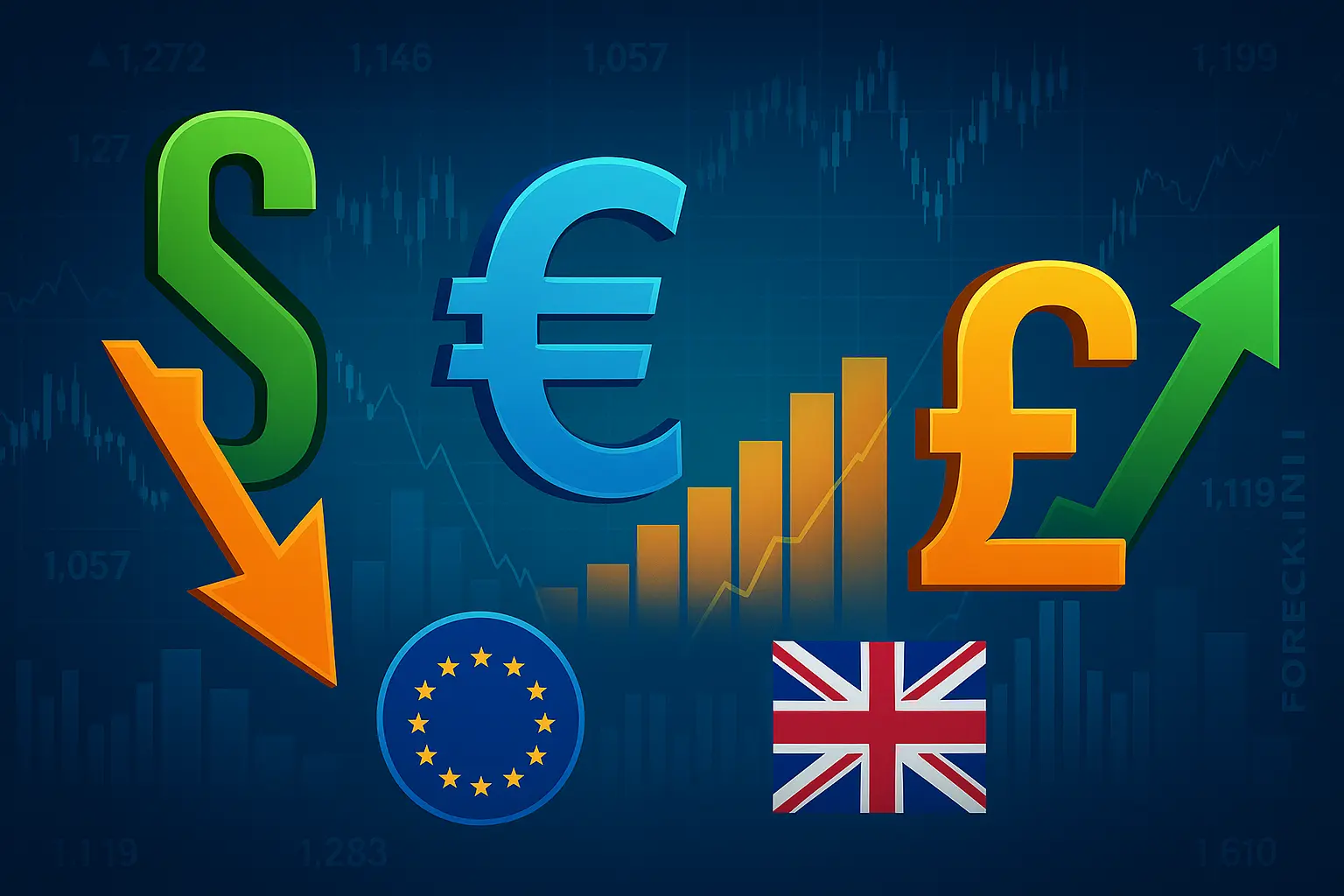Ongoing negotiations between U.S., Russian, EU, and Ukrainian officials are fueling hopes for a peace agreement, although no concrete terms have been announced yet. Most experts do not rule out the possibility of a trilateral summit between the presidents of the U.S., Russia, and Ukraine in the medium term, at which key disputes could be resolved, potentially leading to a reduction in global geopolitical tensions.
Today’s July housing data showed a 2.8% decline in building permits to 1.354 million, while housing starts rose 5.2% to 1.428 million, confirming relative stability in the sector compared to the labor market. Against this backdrop, most traders continue to expect the Federal Reserve to cut borrowing costs this month, despite an acceleration in the Producer Price Index from 2.4% to 3.3%. Market focus is now on Fed Chair Jerome Powell’s speech at the Jackson Hole symposium on Friday at 16:00 (GMT+2). A dovish signal could put the dollar under heavy pressure, while a more cautious stance could restore investor interest in the greenback.
Eurozone
The euro is gaining ground today against the pound, yen, and U.S. dollar.
June current account data showed a rise from €31.8 billion to €35.8 billion, above expectations of €33.4 billion. The non-seasonally adjusted figure also improved sharply from €0.4 billion to €38.9 billion. Analysts note that the decline in the trade balance surplus was offset by increased investment flows within the bloc. On Wednesday at 11:00 (GMT+2), July inflation data will be released. Forecasts suggest the Consumer Price Index will reach 2.0% y/y, with the core CPI at 2.3%. If confirmed, this would signal stable price pressure, giving the ECB scope to ease policy further if needed. Still, most analysts expect no rate cut before December.
United Kingdom
The pound is strengthening against the U.S. dollar but weakening versus the euro, while showing mixed dynamics against the yen.
According to a Reuters survey, most economists expect the Bank of England to cut interest rates only once this year (likely at the November meeting) and once more next year, as inflation risks remain elevated. On Wednesday at 08:00 (GMT+2), July CPI data will be released: monthly inflation is expected to slip from 0.3% to –0.1%, while the annual figure is projected to rise from 3.6% to 3.7%. This would align with the BoE’s forecast that inflation will peak near 4.0% this quarter before easing lower.
Japan
The yen is strengthening against the U.S. dollar, weakening versus the euro, and showing mixed movement against the pound.
Calls for the Bank of Japan to tighten monetary policy are intensifying. Previously, former BoJ members and even U.S. Treasury Secretary Scott Bessent voiced such concerns, and today Taro Kono, a ruling LDP lawmaker and potential candidate for prime minister, echoed them. He argued that borrowing costs should be raised to support the economy and bolster the weak yen, which has fueled inflation and hurt household finances. External pressure on the BoJ is likely to grow further, raising the odds of at least one rate adjustment this year.
Australia
The Australian dollar is declining against all major peers — the U.S. dollar, yen, euro, and pound.
Westpac Banking Corp.’s August consumer sentiment index rose from 0.6% to 5.7%, the highest in over three years. The subindex of household financial outlook over the next 12 months climbed 5.4%, major purchases gained 4.2%, and economic expectations rose 7.2%. Analysts attribute the improvement to the Reserve Bank of Australia’s recent interest rate cut.
Crude Oil
Oil prices are correcting lower, pressured by signs of easing geopolitical tensions.
Yesterday, U.S. President Donald Trump announced that a meeting with Russian and Ukrainian leaders could take place within the next two weeks, where key peace settlement issues may be addressed. Such progress could pave the way for partial or full lifting of sanctions on Russian hydrocarbon exports, boosting supply in an already well-supplied market following OPEC+’s August decision to increase output by another 580,000 barrels per day. This outlook continues to pressure oil prices.
Later today at 22:30 (GMT+2), the American Petroleum Institute (API) will publish its weekly report, with forecasts calling for a 1.2 million-barrel draw in crude stocks. If confirmed, this could lend some short-term support and trigger a rebound in prices.

